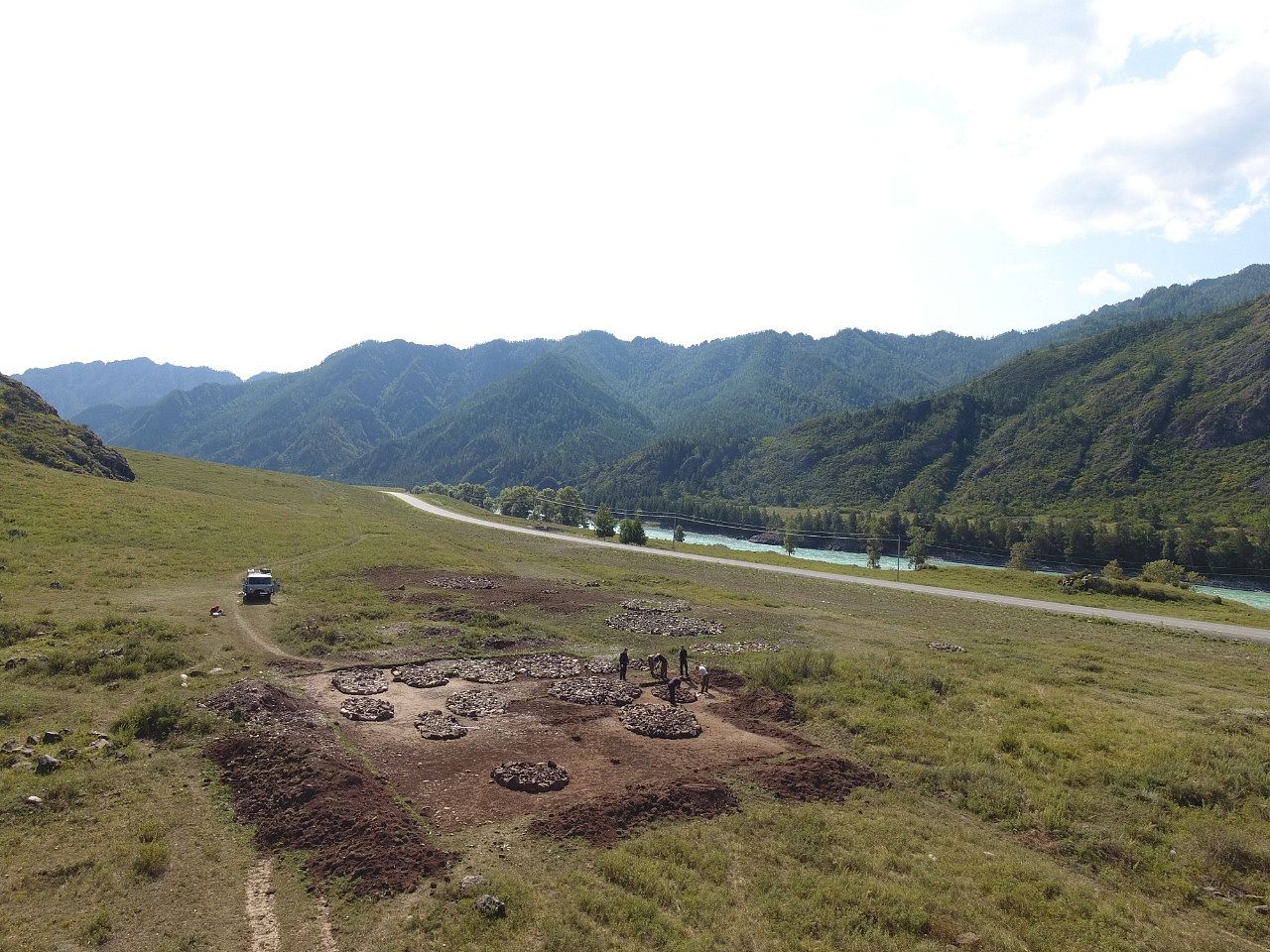Archaeologists from Altai State University explore the history of Altai in the era of the Great Migration

Work on the interdisciplinary study of archaeological materials is carried out within the framework of the project "Comprehensive reconstruction of historical and cultural processes on the territory of the Greater Altai in late antiquity" under the "Priority 2030” program. The project is led by Doctor of Historical Sciences, an associate professor of the Department of Archeology, Ethnography and Museology of AltSU Nikolai Seregin.
Within the framework of the project, it is planned to carry out diverse work, involving the implementation of both traditional approaches of archaeological research, and a complex of natural scientific methods. This seriously expands the previously available opportunities for historical reconstructions.
“This is a fundamental study that involves the analysis of complex processes associated with the formation and transformation of nomadic societies in the 1st millennium BC - the first half of the 1st millennium AD. This year the project is focused on the era of the Great Migration. We reconstruct ethnogenetic processes, study how various groups of the population appeared in Altai, how they developed, what was their social system. We are solving a number of issues that are relevant for archaeologists: for example, the problem of dating of many objects remains unsolved. As part of this work, we use the methods of natural sciences, primarily radiocarbon dating. In addition, various aspects of the material culture of the population of Altai are being studied. We study museum collections, compare them with new materials, reconstruct elements of the costume and, in general, the appearance of people of that time. A very important part of the work is the research of anthropologists. For example, during excavations cases of violent death are recorded and it is very important to understand how this happened, whether it was associated with clashes with other groups of nomads or the result of internal conflicts. This is a very mosaic picture that we are trying to put together,” says project manager Nikolai Seregin.
The results of the project are not only fundamental - they can also be used in the development of excursion programs, which is especially relevant at the present time, when the importance of domestic tourism is increasing. AltSU scientists have gained a lot of experience in this area. They work in the Chemalsky district of the Altai Republic, the most visited tourist attraction.
Excavations are carried out near the Chemalsky tract, in easy accessibility. Therefore, vacationers passing by often stop and show interest in what is happening. Understanding this situation, scientists recreate the appearance of the monument after excavations. Thus, you can see how these mounds and memorial structures looked like when they were built by ancient people. In fact, these are ready-made excursion programs. These objects can also be included in tourist routes.
“The project that we are implementing as part of the “Priority 2030” program has become part of a fairly large-scale research that is supported by a number of foundations - the Russian Science Foundation, the Russian Foundation for Basic Research, and the Council for Grants of the President of the Russian Federation. In addition, the participation of foreign colleagues in the framework of joint programs is important, which allows us to fully use the modern possibilities of the natural sciences. One of the results of the project in 2022 will be the publication of a monograph dedicated to the study of the basic archaeological complex of the Northern Altai during the Great Migration Period. In this book, as well as in a series of articles, we will present the results of the reconstruction of the history of the population of the region during this dynamic period. Significant prospects are associated with obtaining a series of results of radiocarbon, isotope and X-ray fluorescence analyzes, as well as paleogenetic study of samples. Over the next few years, in a number of aspects, we expect to reach a new level in understanding the complex processes of formation and transformation of Altai societies in the era of nomadic empires,” Nikolai Seregin notes.